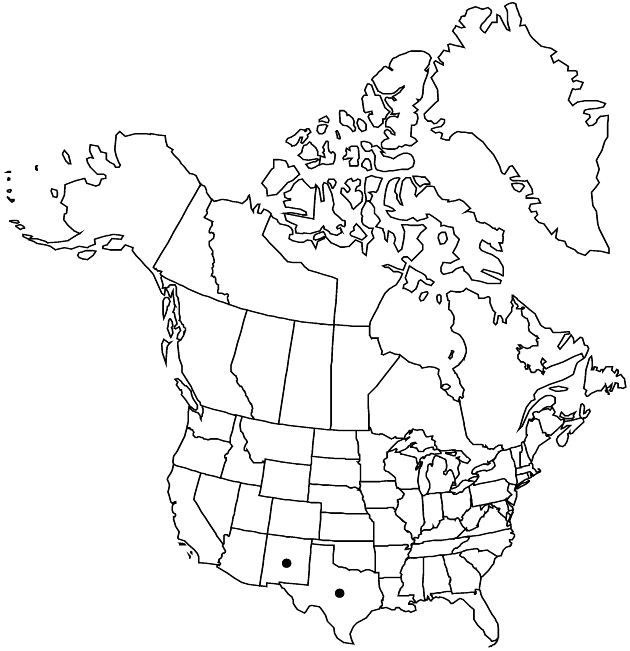Grindelia havardii
Ann. Missouri Bot. Gard. 21: 474, fig. 11. 1934.
Perennials (perhaps flowering first or second year), 30–50(–150) cm. Stems erect, stramineous to pinkish, usually villosulous to hirtellous and/or stipitate-glandular, sometimes glabrate. Cauline leaf blades mostly ovate to oblong, (7–)15–30(–55) mm, lengths 2–4 times widths, bases ± clasping, margins crenate (teeth mostly 3–5 per cm, blunt, resin-tipped), apices obtuse to acute, faces usually hirtellous and little, if at all, gland-dotted, sometimes glabrate (then gland-dotted). Heads borne singly or in open to crowded, corymbiform arrays. Involucres broadly urceolate to globose, 8–13 × 12–22 mm (often subtended by leaflike bracts). Phyllaries in 5–6 series, reflexed to spreading, linear to lanceolate, apices subulate to terete, ± recurved to straight (terminal setae incurved), moderately to strongly resinous. Ray florets 18–25; laminae 8–11 mm. Cypselae stramineous to light brown, (2–)3–3.5 mm, apices smooth to minutely coronate, faces smooth or striate (angles ± ribbed); pappi of 2 ± straight, usually smooth (apices usually dilated), setiform awns 4–7 mm, ± equaling disc corollas. 2n = 12.
Phenology: Flowering Jun–Sep(–Oct).
Habitat: Open sites, rocky slopes of limestone, dry gravelly washes, alluvium
Elevation: 1100–2000 m
Discussion
Selected References
None.
